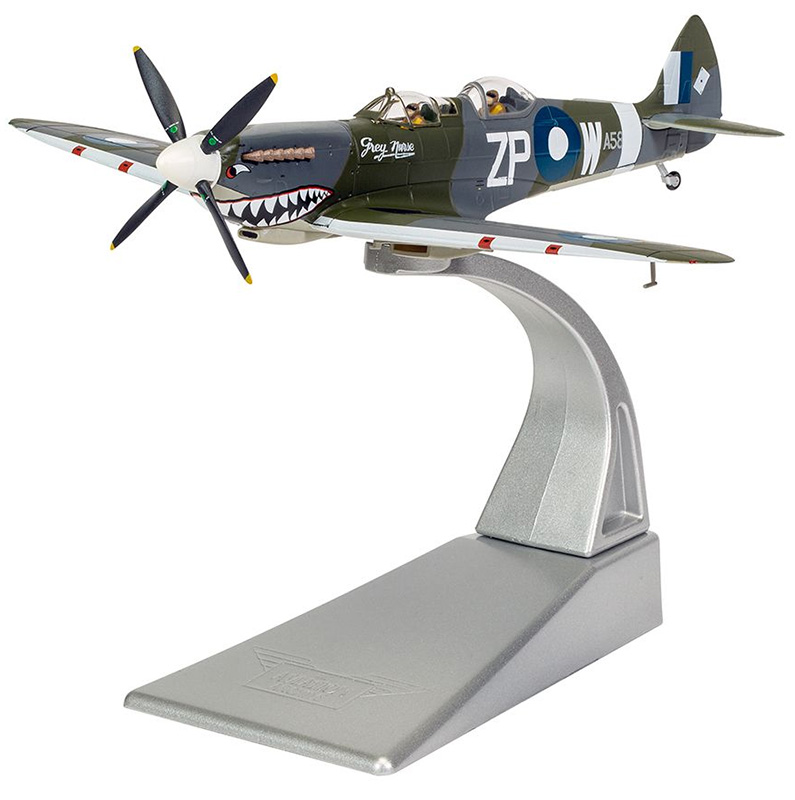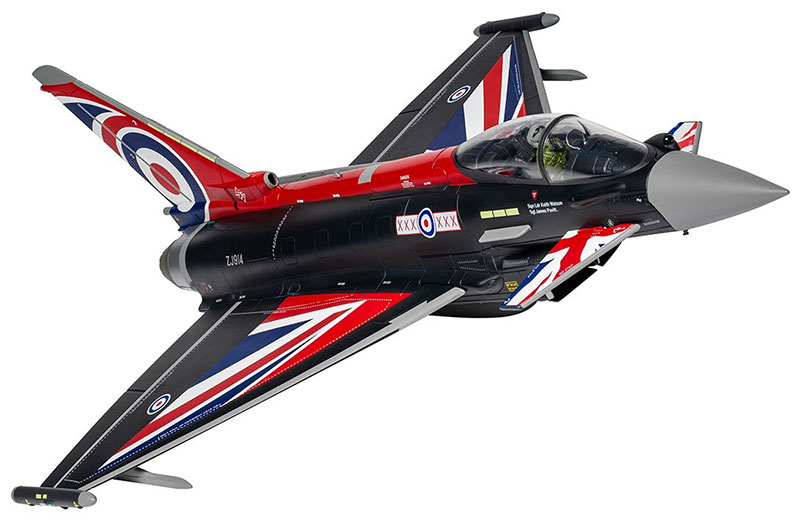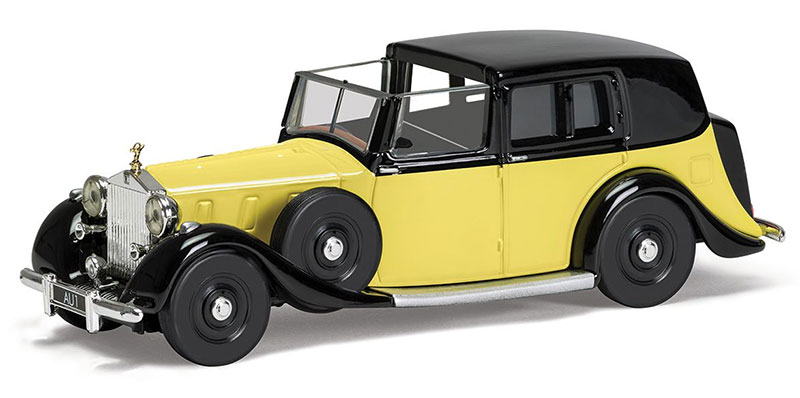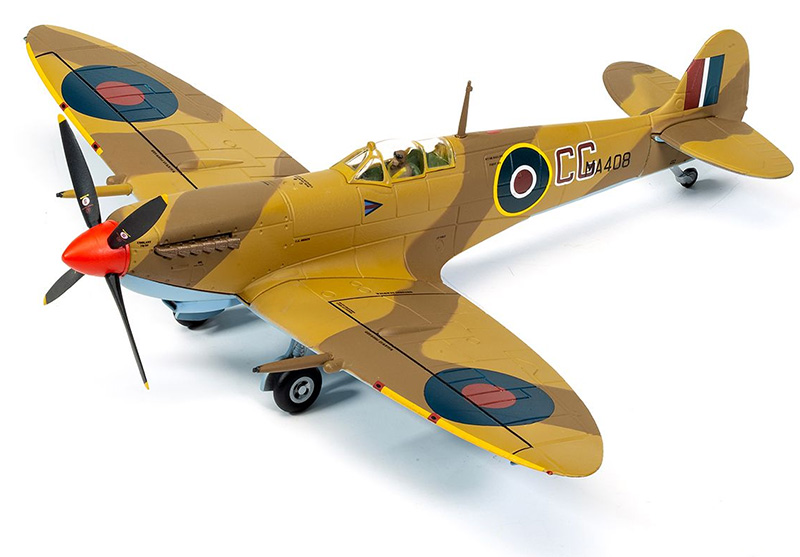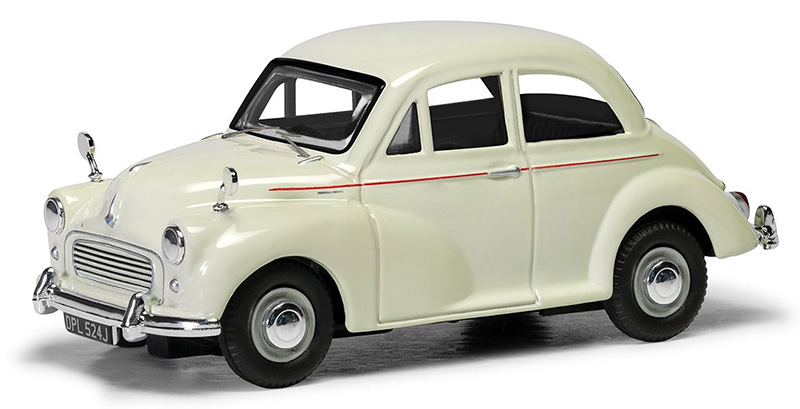
438 West St N, Unit #1, Orillia, Ontario L3V 5E8
Items Available in Canada and from USA
Please use the search in top right of page to start searching or start with a list of manufactures
Searching for:
All items available for order in Canada and USA
All Scales
All products made by CORGI
Reset/Restart Search
Narrow down by location:
Narrow down by manufacturer :
Narrow down by scale:
Narrow down Preorders:
Found 18 items (1 page)
TV and Movies - CORGI - CC04604 - James Bond - Gyrocopter - 'Little Nellie' - You
Scale: 1/36
By: CORGI
Added: 2024-08-28
SKU: B2B-CC04604
Comes from California, USA
allow up 3 weeks for delivery
$79.95 CDNeach
Price: $71.08 CDN plus Taxes of $8.87 CDN
Contact us if you wish us to order for you.
Note any reference to MSRP MAP above in description are to be ignored. They represent USA $ pricing and are not valid for Canadian prices.
Aircraft - CORGI - AA29201 - Supermarine Spitfire T.9 TE308 'Grey Nurse' - Bigg
Scale: 1/72
By: CORGI
Added: 2024-07-19
SKU: B2B-AA29201
Comes from California, USA
allow up 3 weeks for delivery
$129.95 CDNeach
Price: $115.16 CDN plus Taxes of $14.79 CDN
Contact us if you wish us to order for you.
Note any reference to MSRP MAP above in description are to be ignored. They represent USA $ pricing and are not valid for Canadian prices.
Aircraft - CORGI - AA33321 - Boeing B-17G Flying Fortress 43-37756G Milk Wagon
Scale: 1/72
By: CORGI
Added: 2024-05-23
SKU: B2B-AA33321
Comes from California, USA
allow up 3 weeks for delivery
$409.95 CDNeach
Price: $363.29 CDN plus Taxes of $46.66 CDN
Contact us if you wish us to order for you.
Note any reference to MSRP MAP above in description are to be ignored. They represent USA $ pricing and are not valid for Canadian prices.
Aircraft - CORGI - AA29003 - Blackjack - Eurofighter Typhoon FGR4, ZJ914
Scale: 1/48
By: CORGI
Added: 2024-05-09
SKU: B2B-AA29003
Comes from California, USA
allow up 3 weeks for delivery
$394.95 CDNeach
Price: $349.50 CDN plus Taxes of $45.45 CDN
Item is in pre order and can not be purchased at this time
Note any reference to MSRP MAP above in description are to be ignored. They represent USA $ pricing and are not valid for Canadian prices.
TV and Movies - CORGI - CC06807 - Rolls Royce Sedance de Ville in Yellow and Black -
Scale: 1/36
By: CORGI
Added: 2024-05-09
SKU: B2B-CC06807
Comes from California, USA
allow up 3 weeks for delivery
$79.95 CDNeach
Price: $71.08 CDN plus Taxes of $8.87 CDN
Item is in pre order and can not be purchased at this time
Note any reference to MSRP MAP above in description are to be ignored. They represent USA $ pricing and are not valid for Canadian prices.
Aircraft - CORGI - AA28008 - Messerschmitt Bf109E-4 - Germany, 1940
Scale: 1/72
By: CORGI
Added: 2024-03-14
SKU: B2B-AA28008
Comes from California, USA
allow up 3 weeks for delivery
$129.95 CDNeach
Price: $115.16 CDN plus Taxes of $14.79 CDN
Item is in pre order and can not be purchased at this time
Note any reference to MSRP MAP above in description are to be ignored. They represent USA $ pricing and are not valid for Canadian prices.
Aircraft - CORGI - AA36714 - Junkers JU-88C-6 - R4+HH - Gerhard Bohme - Catania
Scale: 1/72
By: CORGI
Added: 2024-03-14
SKU: B2B-AA36714
Comes from California, USA
allow up 3 weeks for delivery
$184.95 CDNeach
Price: $163.69 CDN plus Taxes of $21.26 CDN
Item is in pre order and can not be purchased at this time
Note any reference to MSRP MAP above in description are to be ignored. They represent USA $ pricing and are not valid for Canadian prices.
Aircraft - CORGI - AA38908 - Fokker D.VII (OAW) Ltn. - Kurt MonningtonUn
Scale: 1/48
By: CORGI
Added: 2023-07-07
SKU: B2B-AA38908
Comes from California, USA
allow up 3 weeks for delivery
$129.95 CDNeach
Price: $115.16 CDN plus Taxes of $14.79 CDN
Contact us if you wish us to order for you.
Note any reference to MSRP MAP above in description are to be ignored. They represent USA $ pricing and are not valid for Canadian prices.
Aircraft - CORGI - AA27112 - Messerschmitt Me109G-6 Trop - Maggiore Antonio Viz
Scale: 1/72
By: CORGI
Added: 2023-07-06
SKU: B2B-AA27112
Comes from California, USA
allow up 3 weeks for delivery
$129.95 CDNeach
Price: $115.16 CDN plus Taxes of $14.79 CDN
Contact us if you wish us to order for you.
Note any reference to MSRP MAP above in description are to be ignored. They represent USA $ pricing and are not valid for Canadian prices.
Aircraft - CORGI - AA28803 - Bristol F-2B Fighter - No.111 Sqn - Egypt, October
Scale: 1/72
By: CORGI
Added: 2023-07-06
SKU: B2B-AA28803
Comes from California, USA
allow up 3 weeks for delivery
$184.95 CDNeach
Price: $163.69 CDN plus Taxes of $21.26 CDN
Contact us if you wish us to order for you.
Note any reference to MSRP MAP above in description are to be ignored. They represent USA $ pricing and are not valid for Canadian prices.
Aircraft - CORGI - AA29101 - Supermarine Spitfire Mk.IX W/Cdr. - J.E. Johnson
Scale: 1/72
By: CORGI
Added: 2023-07-06
SKU: B2B-AA29101
Comes from California, USA
allow up 3 weeks for delivery
$129.95 CDNeach
Price: $115.16 CDN plus Taxes of $14.79 CDN
Contact us if you wish us to order for you.
Note any reference to MSRP MAP above in description are to be ignored. They represent USA $ pricing and are not valid for Canadian prices.
Aircraft - CORGI - AA29102 - Supermarine Spitfire MkIXc - GC Colin Gray - Opera
Scale: 1/72
By: CORGI
Added: 2023-07-06
SKU: B2B-AA29102
Comes from California, USA
allow up 3 weeks for delivery
$129.95 CDNeach
Price: $115.16 CDN plus Taxes of $14.79 CDN
Contact us if you wish us to order for you.
Note any reference to MSRP MAP above in description are to be ignored. They represent USA $ pricing and are not valid for Canadian prices.
Aircraft - CORGI - AA36617 - Lockheed P-38L Lightning, 'Putt Putt Maru', 1945
Scale: 1/72
By: CORGI
Added: 2023-07-06
SKU: B2B-AA36617
Comes from California, USA
allow up 3 weeks for delivery
$164.95 CDNeach
Price: $146.46 CDN plus Taxes of $18.49 CDN
Contact us if you wish us to order for you.
Note any reference to MSRP MAP above in description are to be ignored. They represent USA $ pricing and are not valid for Canadian prices.
Cars - CORGI - RT33001 - 330 Porsche Carrera 6 in Red and White N
Scale: 3.8"
By: CORGI
Added: 2023-07-06
SKU: B2B-RT33001
Comes from California, USA
allow up 3 weeks for delivery
$49.95 CDNeach
Price: $44.41 CDN plus Taxes of $5.54 CDN
Contact us if you wish us to order for you.
Note any reference to MSRP MAP above in description are to be ignored. They represent USA $ pricing and are not valid for Canadian prices.
Cars - CORGI - VA05811 - Morris Minor 1000 in Snowberry White The Mo
Scale: 1/43
By: CORGI
Added: 2023-07-06
SKU: B2B-VA05811
Comes from California, USA
allow up 3 weeks for delivery
$79.95 CDNeach
Price: $71.08 CDN plus Taxes of $8.87 CDN
Contact us if you wish us to order for you.
Note any reference to MSRP MAP above in description are to be ignored. They represent USA $ pricing and are not valid for Canadian prices.
Trucks - CORGI - VA15202 - Police - Ford Ranger Raptor Pickup TruckThe
Scale: 1/43
By: CORGI
Added: 2023-07-06
SKU: B2B-VA15202
Comes from California, USA
allow up 3 weeks for delivery
$79.95 CDNeach
Price: $70.71 CDN plus Taxes of $9.24 CDN
Item is in pre order and can not be purchased at this time
Note any reference to MSRP MAP above in description are to be ignored. They represent USA $ pricing and are not valid for Canadian prices.
Trucks - CORGI - CH067 - Airport Fire Truck - Corgi Chunkies SeriesC
Scale: 4.75"
By: CORGI
Added: 2022-05-19
SKU: B2B-CH067
Comes from California, USA
allow up 3 weeks for delivery
$19.95 CDNeach
Price: $18.11 CDN plus Taxes of $1.84 CDN
Contact us if you wish us to order for you.
Note any reference to MSRP MAP above in description are to be ignored. They represent USA $ pricing and are not valid for Canadian prices.
Trucks - CORGI - CC60215 - Panther Tank – Panzerkampfwagen V Panther Ausf D,
Scale: 1/50
By: CORGI
Added: 2022-05-19
SKU: B2B-CC60215
Comes from California, USA
allow up 3 weeks for delivery
$124.95 CDNeach
Price: $110.53 CDN plus Taxes of $14.42 CDN
Contact us if you wish us to order for you.
Note any reference to MSRP MAP above in description are to be ignored. They represent USA $ pricing and are not valid for Canadian prices.
Site contents (C) Copyright Shawn Knight Systems Inc. Coded by Shawn Knight of Shawn Knight Systems Inc.
